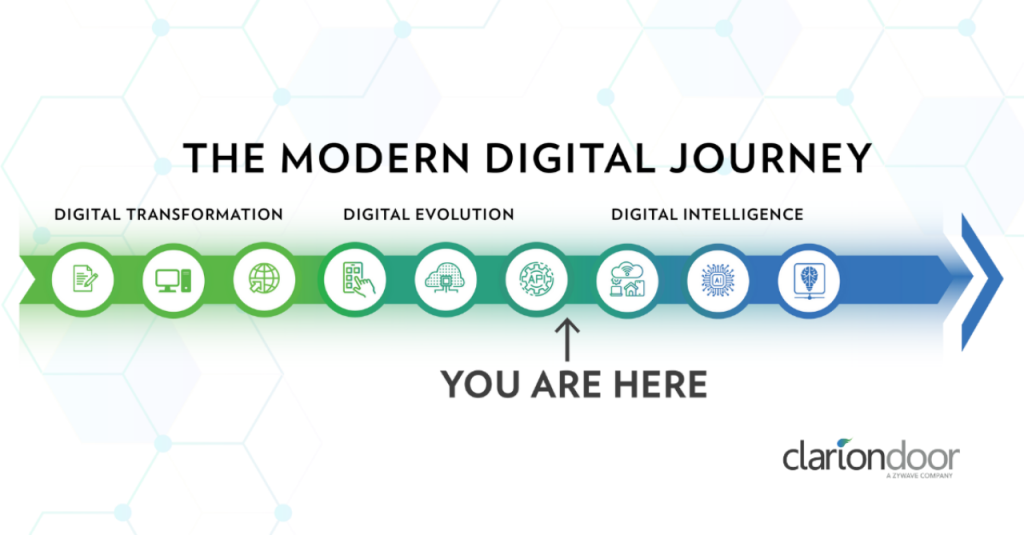Introduction
The Internet has evolved from a rudimentary network of interconnected computers into an expansive digital ecosystem that profoundly influences all facets of our everyday existence. The beginnings of the Internet can be traced back to the late 1960s with the establishment of ARPANET (Leiner et al., 2009). The Internet is a platform that facilitates global communication, commerce, and cultural advancement. Contemporary existence is only possible with the convenience of email, the allure of social media, and the vast online marketplaces facilitated by the Internet. Nevertheless, significant challenges emerge in tandem with these advancements. The proliferation of the Internet has engendered significant transformations in communication, commerce, and cultural engagement. However, it has also given rise to pressing concerns about privacy infringement, dissemination of misinformation, and the digital divide. In the current era of digitalization, it is imperative to acknowledge not just the substantial benefits of global interconnectedness but also the underlying risks.
Revolution in Communication
The emergence of the digital age has had a comparable transformative impact on human communication to that of the printing press or the telephone. At the center of this chaotic scenario lies the internet, a technical breakthrough that has successfully shrunk the vast character of our planet, changing it into a worldwide community. Because of technological advancements, communication between individuals and organizations is now unrestricted by distance or time (Baym, 2015). Facebook and Twitter give two notable instances of the revolutionary influence of social media on communication dynamics, notably in terms of greater speed and efficiency. The democratization of knowledge made possible by the widespread availability of information and communication technologies (Boyd & Ellison, 2007) has allowed previously silenced voices to be heard and understood more clearly.
The amount of depth found in online conversations has also increased. A new vocabulary has developed in modern speech due to the widespread use of emojis, GIFs, and memes in online communication. Recent events throughout the globe have contributed to a dramatic increase in the popularity of video conferencing. For this reason, people around the world can now communicate with one another despite vast physical distances, contributing to the growing convergence of real and virtual interactions.

Figure 1: The Digital Journey by Spiro Skias, Director of Product Marketing at ClarionDoor (https://clariondoor.com/why-are-we-still-talking-about-digital-transformation/)
Nevertheless, it is important to note that accessibility and speed are not the exclusive determinants in this context. The advent of the internet has facilitated the establishment of a global community, enabling individuals from all backgrounds to experience a sense of interconnectedness, irrespective of geographical boundaries or linguistic differences. The internet has significantly impacted communication, effectively converting the world from a fragmented assortment of isolated entities into a cohesive global community whereby individuals possess knowledge of one another’s narratives.
Transformation in Commerce
The emergence of the digital era has brought about a significant transformation in interpersonal communication and paved the way for a novel era in commerce. Reflect upon the era in which customers were required to physically go outside their residences to shop, meticulously examining glossy catalogs and traditional brick-and-mortar establishments. Now, if we advance to the contemporary day, it becomes evident that there have been significant changes in the current situation. E-commerce giants such as Amazon and Alibaba have significantly transformed the consumer purchasing experience by providing convenient access to a wide range of items, typically accompanied by the added benefit of expedited delivery (Laudon & Traver, 2018). The alteration of consumer behaviors has a broader scope than only enhancing accessibility for individuals. The advent of the Internet has facilitated the ability of even the most modest enterprises, artists, and innovators to engage in global competition.

“amazon” by davepattern is licensed under CC BY-NC-SA 2.0.
However, the change involves more than just packing and moving. There has been an equivalent amount of upheaval in the financial industry. Immediate banking is transformed by digital banking operations that eliminate the need for paper checks and other manual processes. As a result, these systems provide a significant challenge to conventional banking practices. Cryptocurrencies such as Bitcoin are broadening our understanding of the nature of money by introducing a decentralized and digital form of currency that operates autonomously from traditional financial institutions (Narayanan et al., 2016).
Furthermore, the marketing approach has undergone a significant transformation. The use of immersive augmented reality experiences and targeted advertising, facilitated by big data analytics, exemplifies the innovative ways the digital realm empowers enterprises to engage with their clients. The emergence of the Internet has significantly transformed the basic characteristics of corporate operations, resulting in increased adaptability, transparency, and customer-centricity. The forthcoming future presents both excitement and uncertainty as we persist in adopting digital transformation and exploring the boundaries of company potential.
Cultural Shifts
The internet’s pervasive influence has permeated many aspects of our societies, transforming cultural practices, values, and the basic processes of art and entertainment consumption and production. There has been a notable shift in television viewing patterns in recent years. The influence of traditional television broadcasters has diminished, creating space for dominant streaming platforms such as Netflix and Hulu. The vast on-demand libraries these platforms provide have enabled a wide variety of content, such as Korean dramas and Spanish thrillers, to reach an international audience (Lotz, 2017).
The Internet has developed into a dynamic medium that provides entertainment and promotes cross-cultural communication and understanding. Online video-sharing sites like YouTube and TikTok have become major venues where people worldwide can showcase their unique cultural practices, ideas, and remarkable achievements. Jenkins (2006) argues that cultural phenomena can attain worldwide awareness, which may help bring people of different origins closer together.

Figure 2: The Impact of Digital Transformation by Michael Fitzgerald,Technical Writer (https://www.capgemini.com/dk-en/wp-content/uploads/sites/42/2017/07/embracing_digital_technology_a_new_strategic_imperative.pdf)
Additionally, new subcultures have developed in the digital sphere. With the advent of esports, gaming has gone from being seen as a lonely hobby to a highly competitive sport with well-known players and a dedicated fan base. Likewise, online fandom networks have served as a platform for enthusiasts to convene and engage in discussions, exerting influence over the trajectory of their preferred media content. The internet has played a significant role in cultural transformations, going beyond a passive observer and actively challenging established norms, stimulating change, and enhancing global interconnectedness.
Challenges Presented by Internet Transformation
The transformative impact of the internet has undeniably yielded several favorable consequences. However, it is imperative to acknowledge the challenges that have emerged concomitantly with this advancement in digital technology. The safeguarding of personal information is a significant concern. The value of personal data has escalated in contemporary interconnected societies, with instances of covert collection for commercial objectives or subsequent sale to external entities (Zuboff, 2019). The heightened concerns over privacy and surveillance in the digital world directly result from technological advancements. The dissemination of misinformation is an additional significant challenge. The dissemination of health disinformation and political manipulation through global communication channels has significant real-world consequences (Wardle & Derakhshan, 2017). The persistent issue of the digital divide remains a significant concern. The exacerbation of disparities in education, health, and economic opportunities is attributed to the limited accessibility of Internet services, even at a fundamental level, as highlighted by Hilbert (2016). Although the internet has undeniably enhanced our lives, we must confront the challenges it presents with the same determination and ingenuity as we have applied to harnessing its benefits.
Conclusion
The internet has significantly transformed several aspects of human communication, commerce, and perception of the external environment. The potential of this phenomenon is vast. However, it also presents several challenges. As society progresses in the digital age, it becomes imperative to strike a balance between wholeheartedly embracing the benefits it offers and mitigating the potential risks it presents.
This work is licensed under CC BY-NC 4.0
Reference list
Abbate, J. (2000). Inventing the Internet. MIT Press. Available at: https://mitpress.mit.edu/9780262511155/inventing-the-internet/
Baym, N. K. (2015). Personal connections in the digital age. John Wiley & Sons. Available at: https://www.wiley.com/en-us/Personal+Connections+in+the+Digital+Age%2C+2nd+Edition-p-9780745670331
Boyd, D. M., & Ellison, N. B. (2007). Social network sites: Definition, history, and scholarship. Journal of Computer‐Mediated Communication, 13(1), 210-230. Doi: https://psycnet.apa.org/record/2007-19531-011
Hilbert, M. (2016). The bad news is that the digital access divide is here to stay: Domestically installed bandwidths among 172 countries for 1986–2014. Telecommunications Policy, 40(6), 567-581. Doi: https://doi.org/10.1016/j.telpol.2016.01.006
Laudon, K. C., & Traver, C. G. (2018). E-commerce 2018: business. technology. society. Pearson. Available at: https://books.google.com.pk/books/about/E_commerce_2018.html?id=gkn_swEACAAJ&redir_esc=y
Leiner, B. M., Cerf, V. G., Clark, D. D., Kahn, R. E., Kleinrock, L., Lynch, D. C., … & Wolff, S. (2009). A brief history of the internet. ACM SIGCOMM Computer Communication Review, 39(5), 22-31. Doi: https://doi.org/10.1145/1629607.1629613
Lotz, A. D. (2017). Portals: A treatise on internet-distributed television. Michigan Publishing Services. Doi: http://dx.doi.org/10.3998/mpub.9699689
Morrison-Smith, S., & Ruiz, J. (2020). Challenges and barriers in virtual teams: a literature review. SN Applied Sciences, 2, 1-33. Available at: https://link.springer.com/article/10.1007/s42452-020-2801-5
Narayanan, A., Bonneau, J., Felten, E., Miller, A., & Goldfeder, S. (2016). Bitcoin and cryptocurrency technologies: a comprehensive introduction. Princeton University Press. Available at: https://press.princeton.edu/books/hardcover/9780691171692/bitcoin-and-cryptocurrency-technologies
Wardle, C., & Derakhshan, H. (2017). Information disorder: Toward an interdisciplinary framework for research and policymaking. Council of Europe report, 27(2017), 1-92. Available at: https://edoc.coe.int/en/media/7495-information-disorder-toward-an-interdisciplinary-framework-for-research-and-policy-making.html
Zuboff, S. (2019). The age of surveillance capitalism: The fight for a human future at the new frontier of power. Profile Books. Available at: https://profilebooks.com/work/the-age-of-surveillance-capitalism/


